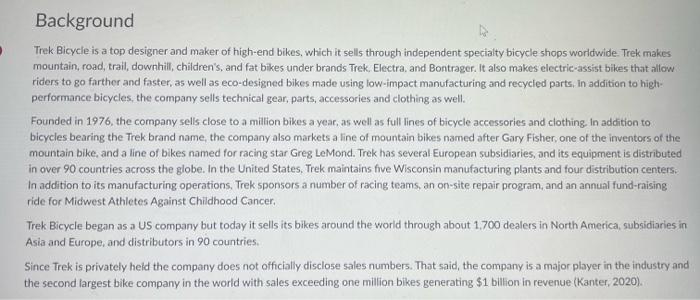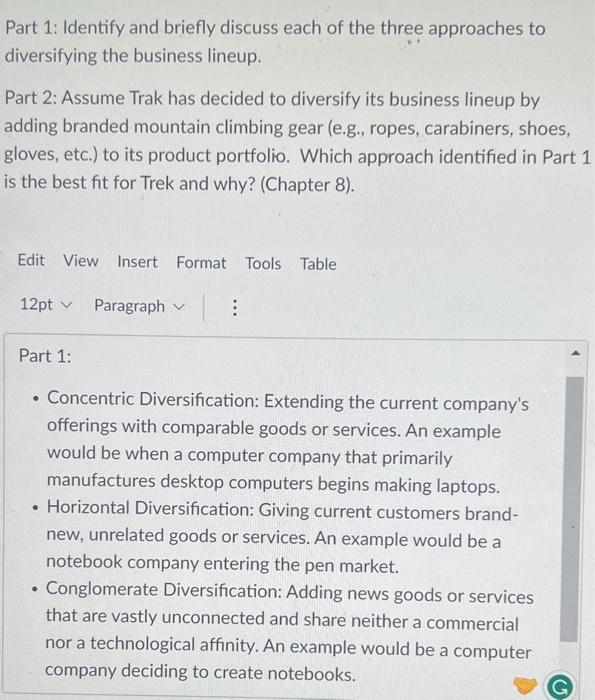Trek Bicycle is a top designer and maker of high-end bikes, which it sells through independent specialty bicycle shops worldwide. Trek makes mountain, road, trail, downhill, children's, and fat bikes under brands Trek. Electra, and Bontrager. It also makes electric-assist bikes that allow riders to go farther and faster, as well as eco-designed bikes made using low-impact manufacturing and recycled parts, in addition to highperformance bicycles, the company sells technical gear, parts, accessories and clothing as well. Founded in 1976, the company sells close to a million bikes a year, as well as full lines of bicycle accessories and clothing in addition to bicycles bearing the Trek brand name, the company also markets a line of mountain bikes named after Gary Fisher, one of the inventors of the mountain bike, and a line of bikes named for racing star Greg LeMond. Trek has several European subsidiaries, and its equipment is distributed in over 90 countries across the globe. In the United States. Trek maintains five Wisconsin manufacturing plants and four distribution centers. In addition to its manufacturing operations. Trek sponsors a number of racing teams, an on-site repair program, and an annual fund-raising ride for Midwest Athletes Against Childhood Cancer. Trek Bicycle began as a US company but today it sells its bikes around the world through about 1,700 dealers in North America, subsidiaries in Asia and Europe, and distributors in 90 countries. Since Trek is privately held the company does not officially disclose sales numbers. That said, the company is a major player in the industry and the second largest bike company in the world with sales exceeding one million bikes generating $1 billion in revenue (Kanter, 2020). Part 1: Identify and briefly discuss each of the three approaches to diversifying the business lineup. Part 2: Assume Trak has decided to diversify its business lineup by adding branded mountain climbing gear (e.g., ropes, carabiners, shoes, gloves, etc.) to its product portfolio. Which approach identified in Part 1 is the best fit for Trek and why? (Chapter 8 ). Edit View Insert Format Tools Table 12pt Paragraph Part 1: - Concentric Diversification: Extending the current company's offerings with comparable goods or services. An example would be when a computer company that primarily manufactures desktop computers begins making laptops. - Horizontal Diversification: Giving current customers brandnew, unrelated goods or services. An example would be a notebook company entering the pen market. - Conglomerate Diversification: Adding news goods or services that are vastly unconnected and share neither a commercial nor a technological affinity. An example would be a computer company deciding to create notebooks








